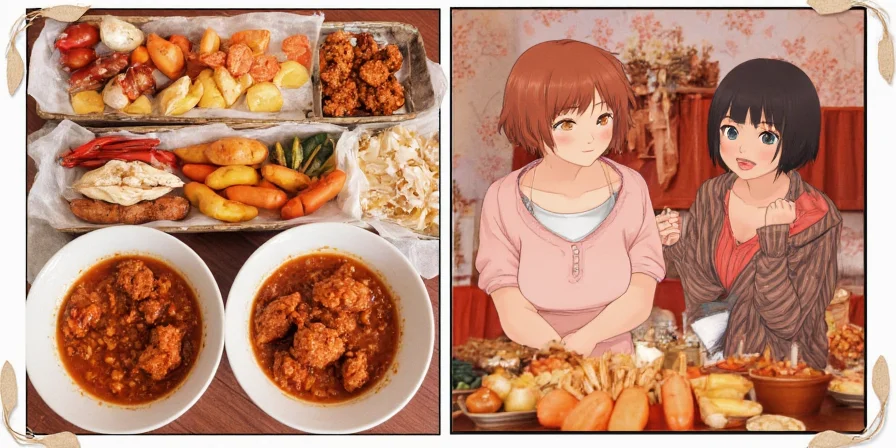If you're searching for an authentic chicken pho recipe that actually delivers restaurant-quality broth, you've found it. This step-by-step guide reveals the exact spice ratios, preparation techniques, and common pitfalls to avoid when making Vietnamese pho ga from scratch.
Prep time: 30 minutes | Cook time: 6 hours | Servings: 6 | Difficulty: Intermediate
Table of Contents
- Essential Ingredients List
- Step-by-Step Chicken Pho Recipe
- Spice Ratios for Perfect Broth
- Pro Tips & Troubleshooting
- Spice Comparison & Substitutions
- FAQs: Common Pho Questions Answered
Essential Ingredients List
Here's exactly what you'll need for authentic chicken pho (pho ga) that rivals Hanoi street vendors:
- 1 whole chicken (3-4 lbs), preferably organic or free-range
- 8 cups water (plus more as needed)
- 2 medium yellow onions, halved
- 3-inch piece fresh ginger, halved lengthwise
- 3 star anise pods (critical for authentic flavor)
- 1 cinnamon stick (about 3 inches)
- 5 whole cloves
- 1 tablespoon coriander seeds
- 1 teaspoon black peppercorns
- 2 tablespoons fish sauce (plus more to taste)
- 1 teaspoon salt (plus more to taste)
- 8 oz dried rice noodles (banh pho)
- Fresh garnishes: Thai basil, cilantro, sliced jalapeños, lime wedges
Step-by-Step Chicken Pho Recipe
- Prepare the aromatics: Char the halved onions and ginger under a broiler or directly over a gas flame until blackened in spots (about 5 minutes). Rinse briefly under water to remove loose char.
- Dry toast the spices: In a dry skillet over medium heat, toast star anise, cinnamon, cloves, coriander seeds, and peppercorns for 2-3 minutes until fragrant. Transfer to a spice bag or cheesecloth.
- Start the broth: In a large stockpot, combine chicken, water, charred aromatics, toasted spices, fish sauce, and salt. Bring to a gentle boil.
- Skim impurities: As soon as boiling begins, reduce heat to low and carefully skim off foam and impurities for 10-15 minutes.
- Simmer the broth: Partially cover and simmer gently for 4-6 hours (do not boil vigorously). After 2 hours, remove chicken, debone, and return meat to pot.
- Strain and season: Strain broth through a fine-mesh sieve. Taste and adjust with fish sauce and salt. For authentic flavor balance, aim for slightly salty with subtle sweetness.
- Prepare noodles: Soak rice noodles in warm water for 20 minutes, then briefly boil until tender (about 2 minutes). Drain and divide among serving bowls.
- Assemble: Top noodles with chicken, pour hot broth over, and serve immediately with fresh garnishes.

Spice Ratios for Perfect Broth (The Authentic Formula)
Getting the spice balance right makes or breaks authentic pho. Our tested ratios for 8 cups of broth:
- Star anise: 3 whole pods (any more creates overwhelming licorice flavor)
- Cinnamon: 1 stick (about 3 inches) - use Saigon cinnamon for best results
- Cloves: 5 whole cloves (more than 6 creates bitterness)
- Coriander seeds: 1 tablespoon (toasted first for brighter flavor)
- Black peppercorns: 1 teaspoon (provides subtle heat without dominance)
Pro Tip: Toast spices in a dry pan for 2-3 minutes before adding to broth. This releases 300% more aromatic compounds than using raw spices.
| Spice | Authentic Measurement | Flavor Impact | Common Mistakes to Avoid |
|---|---|---|---|
| Star Anise | 3 whole pods per 8 cups broth | Signature pho aroma | Using 4+ creates overpowering licorice flavor |
| Cinnamon Stick | 1 stick (3 inches) per 8 cups | Warmth and depth | Ground cinnamon creates cloudiness and bitterness |
| Cloves | 5 whole cloves per 8 cups | Sharpness and complexity | 6+ cloves makes broth bitter |
| Coriander Seeds | 1 tbsp per 8 cups (toasted) | Earthy citrus notes | Skipping toasting loses 60% of flavor |
| Black Peppercorns | 1 tsp per 8 cups | Subtle heat | Using white pepper loses authentic flavor profile |
| Ginger | 3-inch piece, charred | Clears palate, adds brightness | Raw ginger creates harsh, unbalanced flavor |
Pro Tips & Troubleshooting
- Broth clarity secret: Skim diligently during first 15 minutes and maintain gentle simmer (never boil). Cloudy broth comes from emulsified fat from vigorous boiling.
- Perfect noodle texture: Soak in warm (not hot) water for 20 minutes, then briefly blanch in boiling water. Overcooked noodles ruin the texture.
- Time-saving tip: For weeknight pho, prepare broth in advance and freeze. The flavor actually improves after 24 hours.
- Bitter broth fix: If your broth tastes bitter, add 1 thinly sliced shallot and simmer 15 minutes. The natural sugars will balance the bitterness.
- No charring tools? Roast onions and ginger at 400°F for 20 minutes until blackened in spots.
FAQs: Common Pho Questions Answered
What's the difference between pho ga and pho bo?
Pho ga uses chicken broth and chicken meat, while pho bo uses beef broth and beef. Chicken pho requires shorter simmering time (4-6 hours vs 8-12 for beef) and different spice balance - chicken broth needs more delicate spice handling.
Why is my pho broth cloudy?
Cloudiness comes from one of three issues: 1) Boiling instead of simmering gently, 2) Inadequate skimming during first 15 minutes, or 3) Using ground spices instead of whole. To fix, strain through cheesecloth and avoid vigorous boiling.
Can I make this in an Instant Pot?
Yes, but with modifications. Sear chicken first, then cook on High Pressure for 60 minutes with all ingredients. However, traditional slow simmering creates more complex flavor development that pressure cooking can't replicate.
What's the secret to clear pho broth?
Three keys: 1) Skim impurities during first 15 minutes, 2) Maintain gentle simmer (bubbles barely breaking surface), 3) Use whole spices in a spice bag rather than loose. Never let the broth boil after the initial heat-up phase.
How do I store leftover pho properly?
Store broth and components separately. Broth keeps 5 days refrigerated or 3 months frozen. Noodles should be stored dry after brief boiling. Chicken meat stays fresh 3-4 days refrigerated. Always reheat broth to boiling before serving.
Conclusion: Your Path to Authentic Chicken Pho
Creating authentic Vietnamese chicken pho isn't about complicated techniques—it's about understanding the precise spice ratios and timing that make the broth sing. By following these exact measurements and methods, you'll achieve that delicate balance of aromatic spices and clean chicken flavor that defines true pho ga.
Remember: The magic happens in the details. Char your aromatics properly, maintain that gentle simmer, and respect the spice ratios. Within 6 hours, you'll have restaurant-quality pho that transports you straight to Hanoi's streets.
Now that you have the authentic recipe, which spice ratio will you try first? The perfect star anise to cinnamon balance is waiting for you in your kitchen!











 浙公网安备
33010002000092号
浙公网安备
33010002000092号 浙B2-20120091-4
浙B2-20120091-4